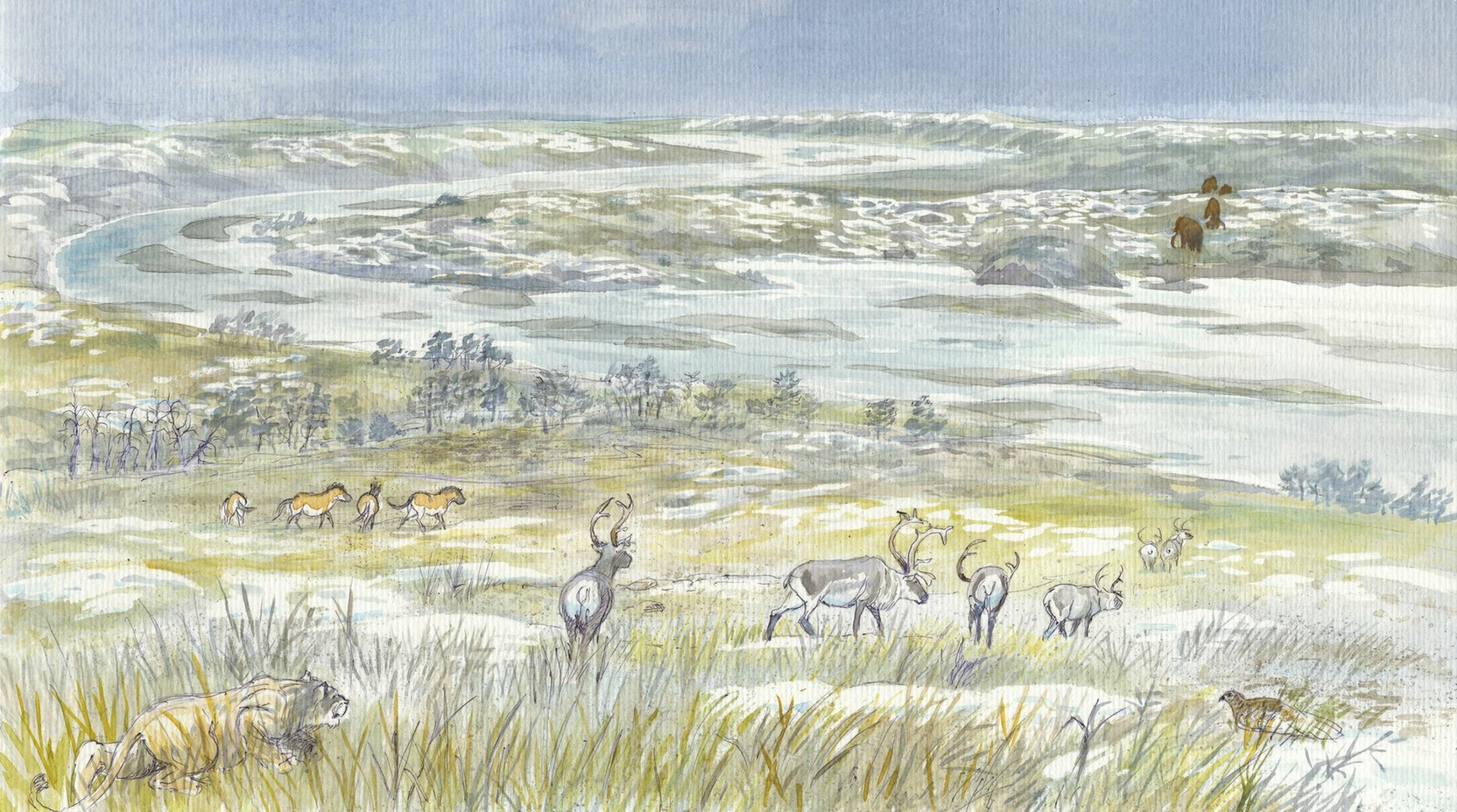
- Home
- Explore the site
- Historical and environmental context
- The Upper Palaeolithic in Europe
Étiolles and the Magdalenian date back to the Upper Palaeolithic, a late subdivision of human prehistory which began more than 2 million years ago in Africa. This period was the meeting point of the very diverse historical trajectories of hunter-gatherers who inhabited many regions of the world between 40,000 and 10,000 BCE, regions all now inhabited by our human species, Homo sapiens.
Significant innovations
Homo sapiens first settled in Europe in around 40,000 BCE, as the Neanderthals disappeared. Their arrival brought with it significant innovations: new and improved arms and the manufacture of flint blades suitable for making numerous bone tools and adornments, never before been seen in Europe. These adornments were made from shells that had often travelled hundreds of kilometres from where they were first gathered and were circulated in exchange networks. They were a means for sharing new symbols which were sumptuously reproduced on decorative objects or, of course, on the walls of caves.
Varied traditions
These technological and artistic traditions, defining features of the European Upper Palaeolithic, varied between different periods and regions. Therefore, prehistorians have identified several broad cultural groups that lived alongside or succeeded one another. They have named them in relation to the archaeological sites where they were identified from the 1860s onwards. This is the case of the Magdalenian, first identified at La Madeleine in Dordogne.


